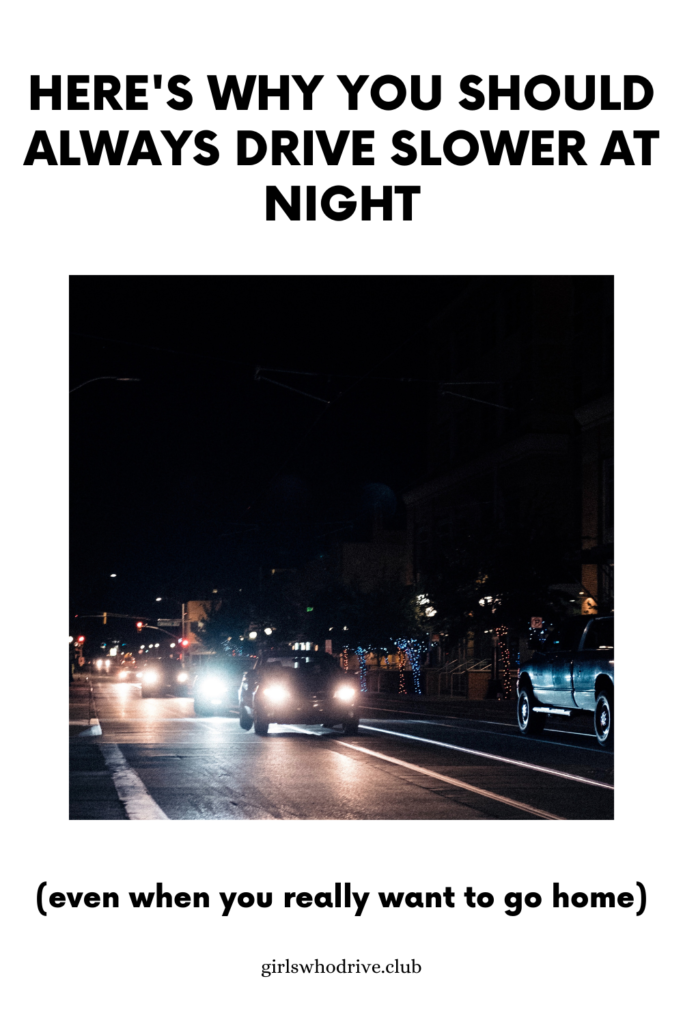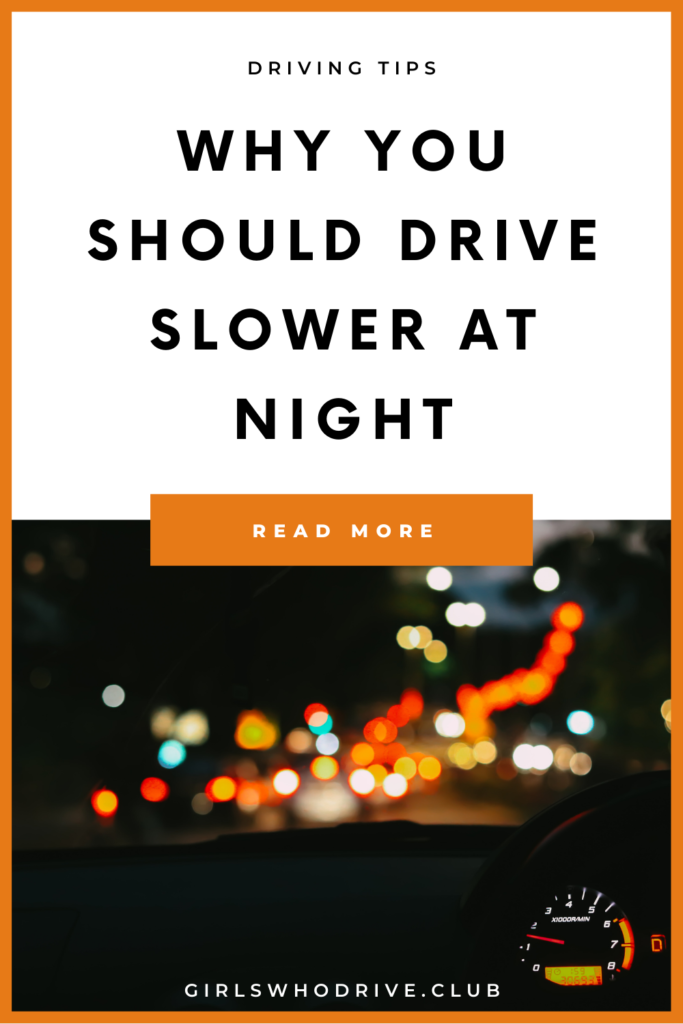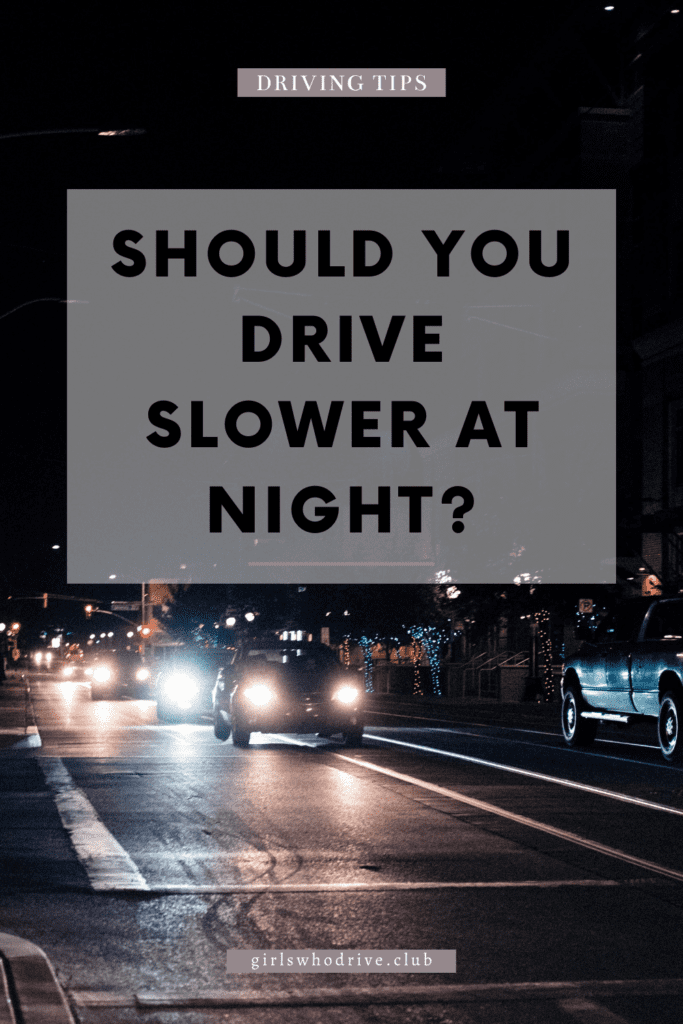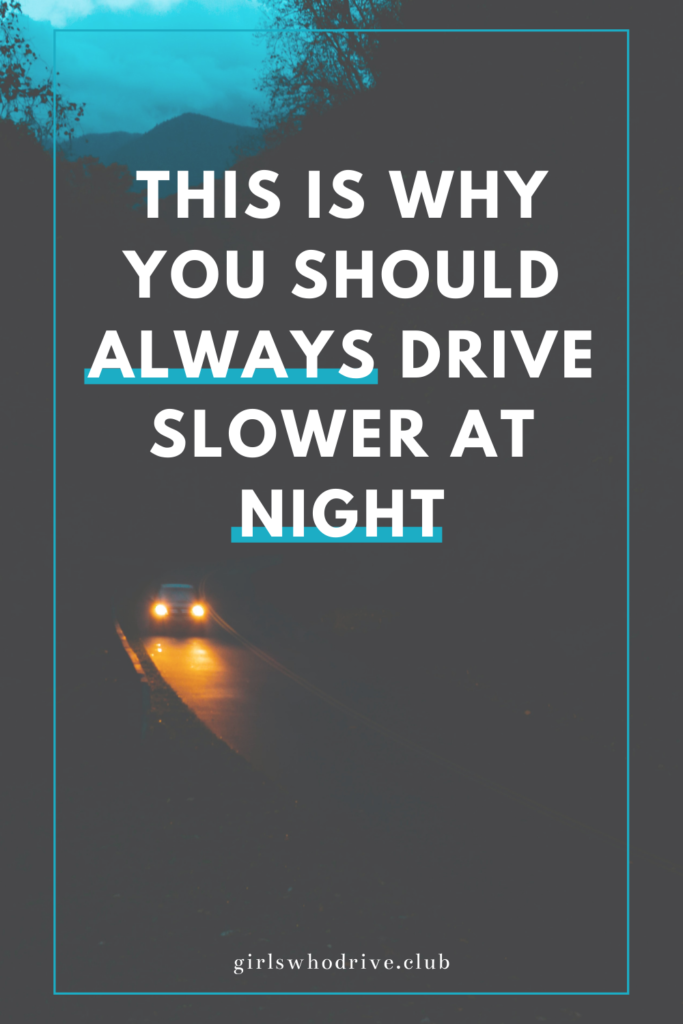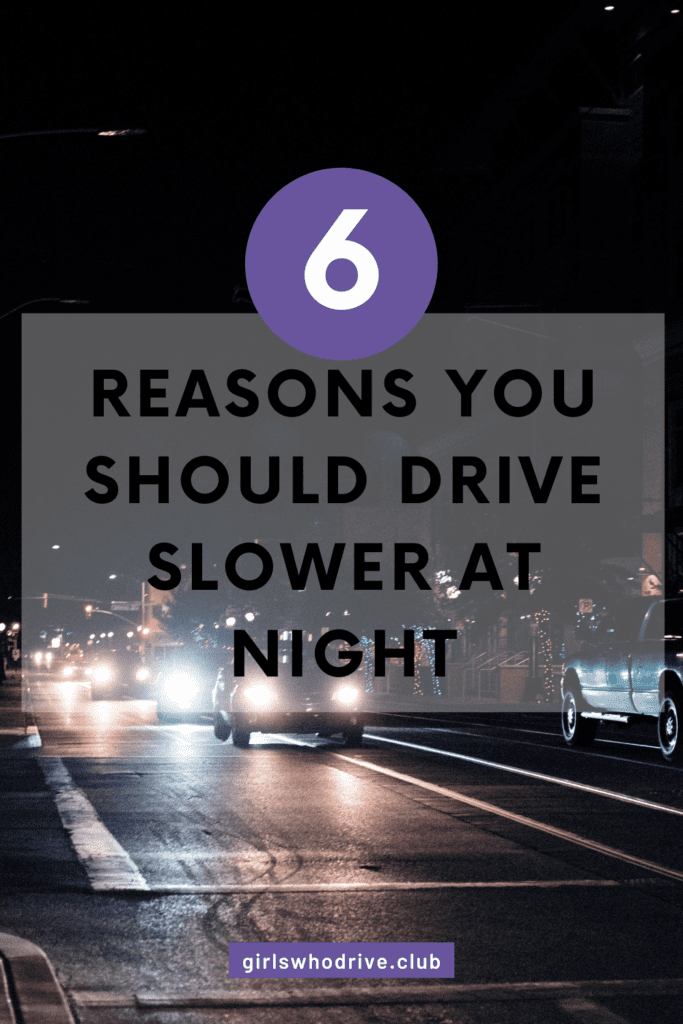This post may contain affiliate links, which means we’ll receive a commission if you purchase through our link, at no extra cost to you. Please read full disclosure here.
Why should you drive slower at night? This post explains 6 important reasons.
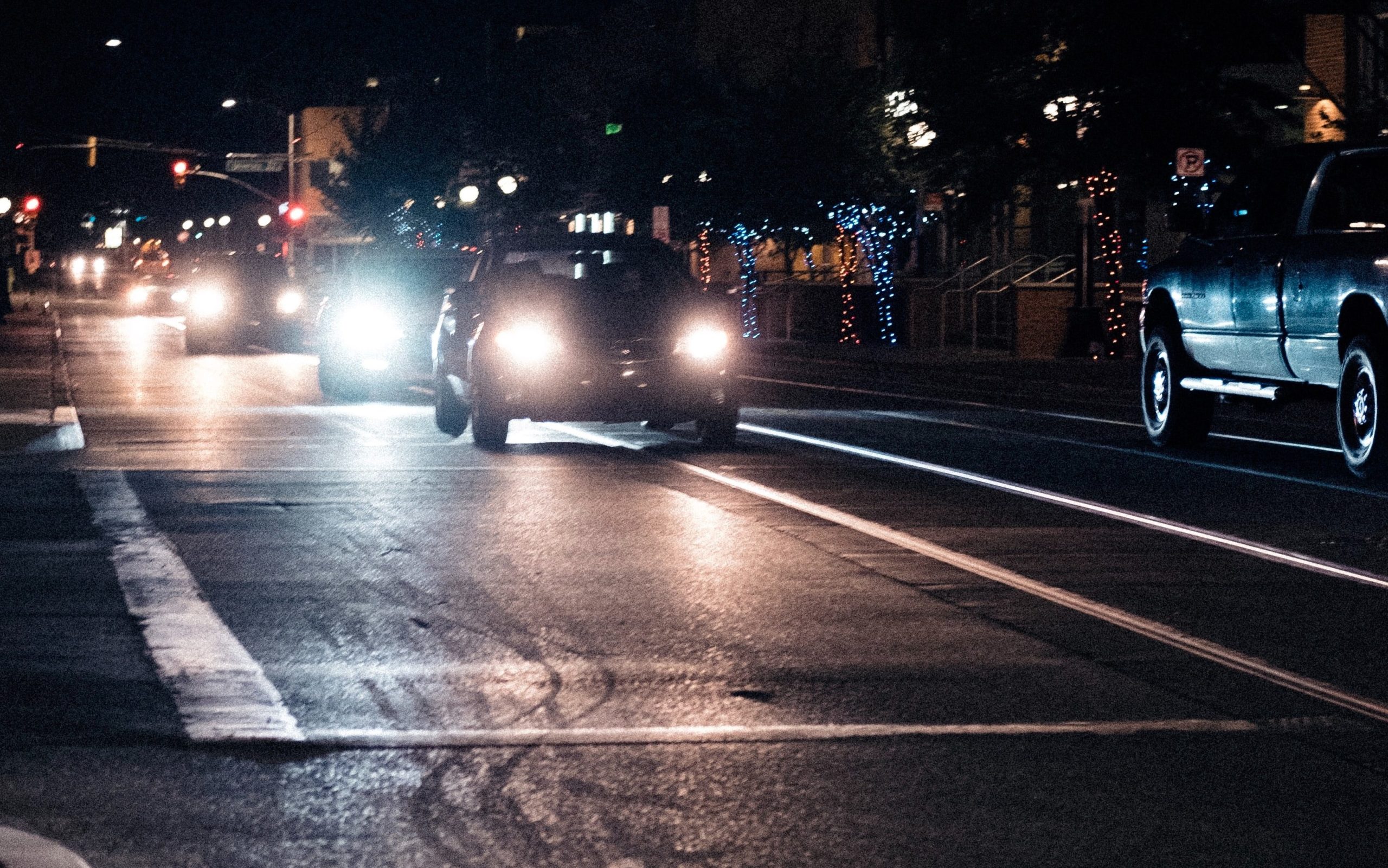
When it’s late and you’re tired, hungry, or both, all you want to do is get home.
No one wants to be driving at night for hours – or worse, stuck in traffic. This is why there is often the temptation to put your foot on the gas and drive as fast as you can.
But as tempting as this might be, it’s a big no-no.
Why should drivers drive more slowly?
In general, it is recommended that people drive more slowly, day or night.
According to Roadskillsonline.com, there are a couple of reasons for this. It can be summarized in three short points:
Speeding:
- kills
- costs
- isn’t any faster
You’ve likely heard about the first point since it is well known that speeding is more likely to lead to a car accident or road fatality.
But did you know that speeding also causes you to spend more on gas? Or that it actually doesn’t get you to your destination any faster?
Shocking, right?
(If you’re interested in learning more about these points, you can read the full article here.)
So, it’s established that drivers should drive more slowly, in general. However, driving slower is even more crucial at night.
Below are 6 reasons why.
Why should you drive slower at night?
1. Limited visibility
Even with 20/20 vision, the average human sees a lot less clearly at night.
During the night, we often go by memory to decipher the dark objects around us, and to find our way around.
And, of course, it’s much harder to move around in the dark in an unfamiliar place.
Driving is very similar.
At night, the distance you can see ahead is significantly less. This is because your vision is limited to where your headlights shine.
According to Popularmechanics.com, your low beams shine only 160 to 250 ft ahead of your vehicle, while high beams (brights) only shine about 350 to 500 ft ahead.
Beyond those 500 ft, you’re forced to guess what obstacles may be in your path.

This brings us to the first reason why you should drive slower at night.
When you drive at a slower speed, it gives you enough time to see what is ahead of you and to respond appropriately.
For instance, you need to be driving slow enough to read road signs, stop at traffic lights, and avoid any person, object, or animal that may suddenly appear in your path.
Now, you may think that if you’ve driven the same route over and over, you should know it well enough to get around quickly, even at night.
While that may be true, it’s no reason to let down your guard and increase your speed.
Because you have no control over the driving skills of other drivers, or any animals, or pedestrians, you need to slow down to keep yourself and others safe.
2. Glares
During the day, everyone’s headlights are off because there’s no need for them. But at night, due to limited visibility, headlights are needed so people can see where they are driving.
While this is totally normal – and necessary – headlights can create a problem when they affect other drivers’ vision.
This happens when a driver’s high beams (or brights) shine directly into the windscreen of another, causing temporary blindness.
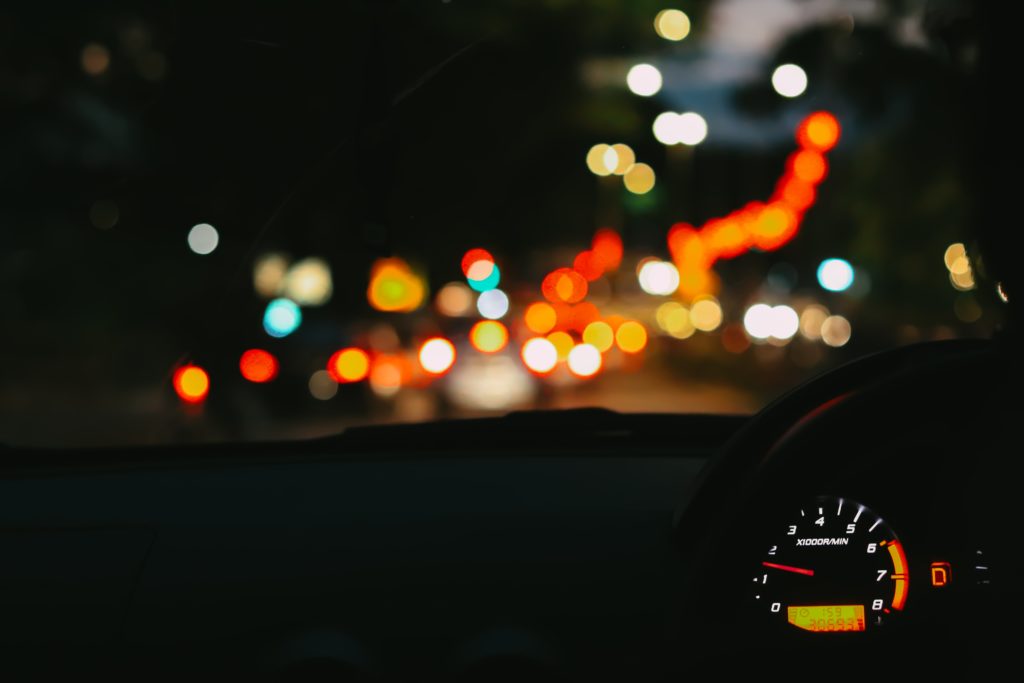
It’s not only headlights that can cause problems, however.
Light reflected on glass, as well as lights from phones, flashlights, and other sources, can also flash into a driver’s eyes and cause a similar effect.
As you can imagine, this is very dangerous since you need to be able to see in order to drive safely.
This is an issue even when you aren’t the one who is blinded.
If lights have affected another driver, they may:
- swerve out of control
- stop suddenly
- panic and do something unexpected
All of these could cause an accident.
You should therefore be driving slow enough to respond appropriately if you, or another driver, is blinded by a bright light.
3. Drug-Impaired drivers
The question ‘why should you drive slower at night’ has yet another important answer – impaired drivers.
Impaired drivers are persons who operate vehicles while under the influence of substances like alcohol, marijuana, and other drugs that affect their ability to think clearly and drive safely.
According to the NHTSA, one person in the US dies every 52 minutes from an accident caused by drunk driving.
That is a tragic and scary statistic.
For this reason, impaired drivers are one of the biggest dangers on the road, both night and day.
However, the risk of encountering an impaired driver is a lot higher at night.
During the day, most persons are at work or engaged in some sort of safe activity to keep them occupied.
But at night-time, particularly on the weekend, people like to go out to party, drink, and take other drugs. Sadly, many of them still decide to get behind the wheel while under the influence.
While you cannot stop other drivers from impaired driving, you should always do your best to protect yourself. Wearing your seatbelt and staying alert are two effective strategies to do so.
Of course, driving at a slower speed is just as important.
As mentioned earlier, driving slower at night gives you enough time to notice any dangerous behavior caused by impaired driving, and respond as necessary.
4. Drowsy drivers
Similar to impaired driving, drowsy driving poses a threat both day and night. But of course, the risk of this threat increases significantly at night, as more people get tired.
The NHTSA has observed some important trends concerning crashes and fatalities caused by drowsy driving.
Most noteworthy is the following:
Crashes and fatalities caused by drowsy driving ‘often involve only a single driver (and no passengers) running off the road at a high rate of speed with no evidence of braking’
This means that at any time, another driver may fall asleep behind the wheel, causing their vehicle to go out of control and into your path.
With no passengers to wake the driver, and no way to stop the speeding vehicle, a very serious accident may occur.
While being in this is situation is definitely frightening, it’s important not to panic as this can make things worse.
Instead, the best response is to observe what is happening and respond quickly and appropriately. You may need to stop your vehicle or swerve out of the way to avoid/minimize a crash.
How can you do this?
As you can guess, driving at a slower speed is the best way to do this successfully, as it buys you enough time to respond appropriately.
5. Reckless drivers
Another reason you should drive slower at night is to protect yourself from reckless drivers.
A reckless driver is someone who chooses to drive carelessly, with no regard for the safety of other drivers or passengers.
These kinds of drivers do not need alcohol, drugs, or exhaustion in order to behave the way they do – they simply lack proper judgment.

As you can imagine, the number of reckless drivers increases significantly at night.
This may be because there is generally less traffic at night time, so a reckless driver assumes they have more opportunities to speed, or because reckless drivers feel empowered by the cover of darkness.
Regardless of their reasoning, these types of drivers are a big threat to your safety.
Therefore, when driving at night, drive slow enough to be able to stop, pull over, give room to, and avoid any reckless or aggressive drivers.
6. Wild animals
The final reason why you should drive slower at night is because of wildlife.
At night, animals are more likely to wander into public roads and highways due to reduced traffic and noise.
While they may be cute and unsuspecting, animals are a huge threat to drivers, big and small.
In fact, Pewtrusts.org published the following:
“An estimated 1 million to 2 million crashes between motor vehicles and large animals such as deer occur every year in the U.S., causing approximately 200 human deaths, 26,000 injuries, and at least $8 billion in property damage and other costs.”
An animal may unexpectedly appear in your path and freeze like a deer in headlights. (Literally!)
When driving at night, you should always be driving slow enough to be able to stop or swerve your vehicle before it is too late.
So…should you drive slower at night?
Based on the information and statistics above, the answer is a big fat YES.
At night, driving can be dangerous for numerous reasons – many of which are unexpected.
When driving at night, you should always drive slower, to give yourself enough time to notice and respond appropriately to any oncoming threat.
Pin It!
